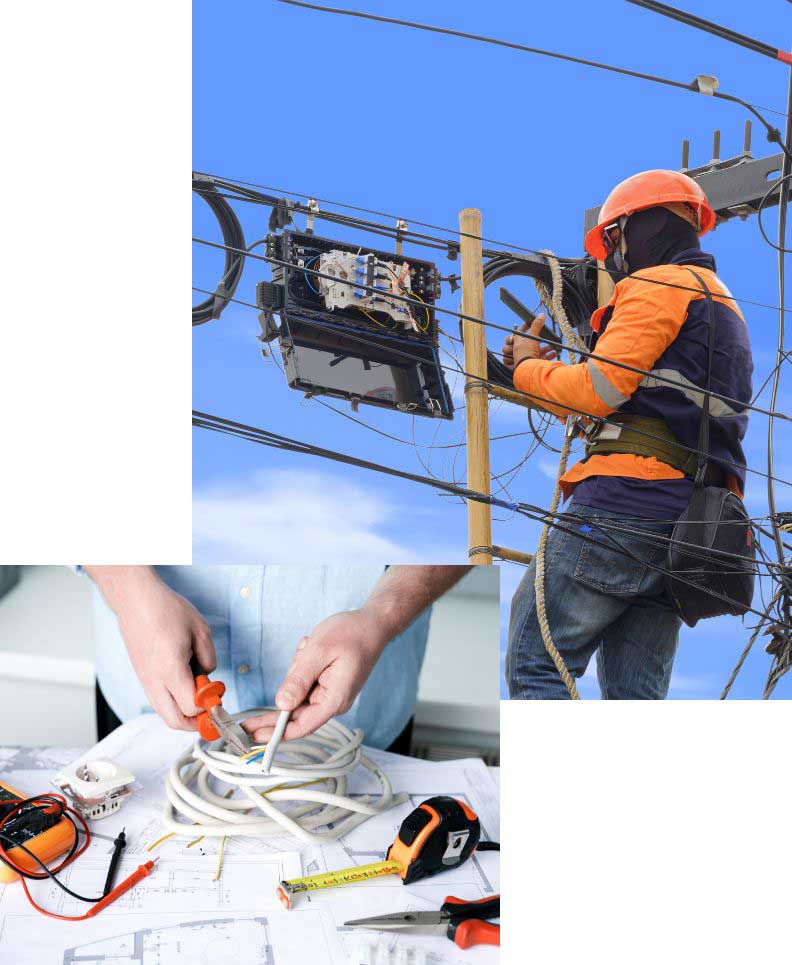APPRENTICESHIP PROGRAMS

Telecommunications
Installer-Technicians
Telecommunications Installer-Technicians install circuits and equipment for telephones, computer networks, video distribution systems, security and access control systems, and other low voltage systems. Major duties for Telecommunications Installer-Technicians include:
- Planning and Initiating Projects
- Installing Underground Voice or Data Circuit Feeders to Entrance Facilities
- Providing or Connecting to the Grounding Electrode System
- Installing Pathways and Spaces for Installation of Low Voltage Wiring
- Installing and Terminating Wires and Cables
- Installing Local Area Network (LAN) Cabling Systems
- Installing Security and Access Control Systems
- Installing Communications and Sound Distribution Systems
- Testing and Repairing Video, Voice, and Data Systems
In performing these duties, Telecommunications Installer Technicians must use many different kinds of tools, ranging from simple ones and two-hand tools (such as screwdrivers and cable cutters) to power-assisted tools like electric drills and screw guns. They occasionally operate heavy equipment such as trenchers.

Over the course of the three-year Telecommunications Installer- Technicians apprenticeship program, apprentices must become competent in many technical areas. A recent job analysis identified 124 specific areas of knowledge that are important for Telecommunications Installer-Technicians’ job performance. A few of the most important ones are knowledge of:
- Color Codes (Proper Termination Sequence)
- Structured Wiring
- Cable Testing Requirements and Standards
- Local Area Networks (LAN)
- The Basics of Telephony
- Blueprints, Including Symbols Used
- Electronic Industries Association (EIA)/Telecommunications Industry Association (TIA) Standards
- The Principles of Grounding
- First Aid
- Hazardous Materials
- Proper Wire/Cable to Use in Different Circumstances
Some of the most important skills to be learned are:
- Skill at Terminating Twisted Pair Cable
- Skill at Terminating Fiber Optic Cable
- Skill at Troubleshooting Through Segmentation and Isolation
- Skill at Diagnosing the Source of Equipment Malfunctions
- Skill at Splicing Copper, Coaxial and Fiber Optic Cable
- Skill at Performing CPR
